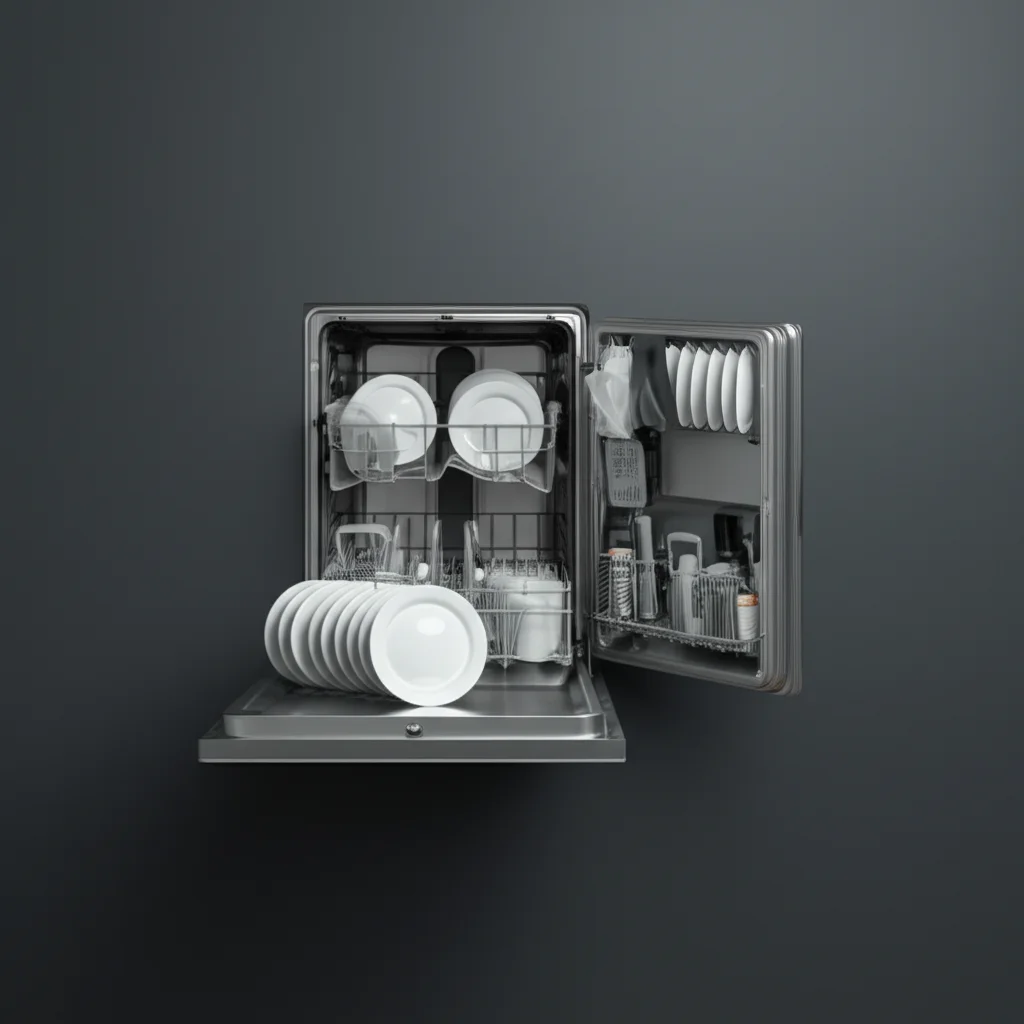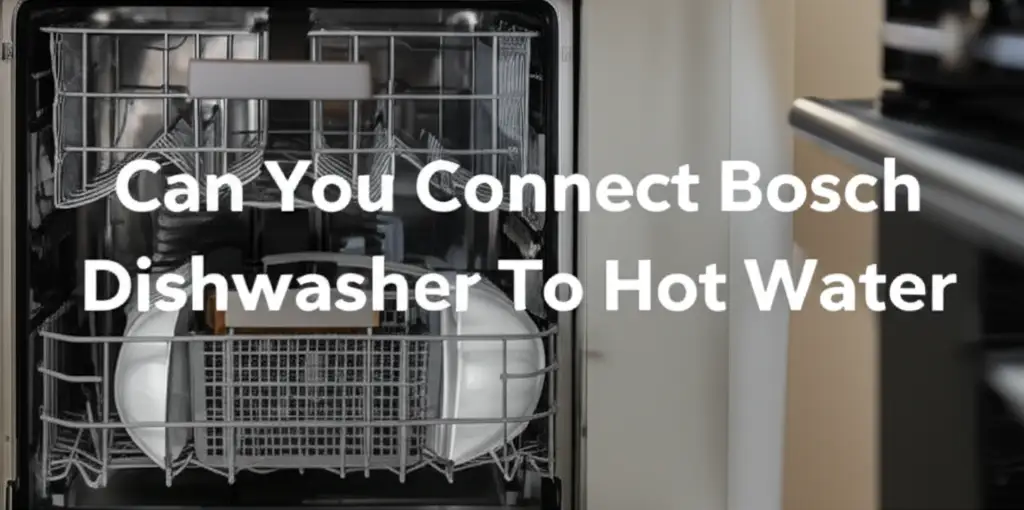· Todd Martin · Home Appliances · 12 min read
How Much Electricity Dishwasher Use

How Much Electricity Dishwasher Use: Your Guide to Energy Savings
Many of us enjoy the convenience of a dishwasher. This appliance saves time and keeps our kitchens tidy. A common question arises, “How much electricity dishwasher use?” Understanding your dishwasher’s energy consumption helps manage household budgets. It also lets you make smart choices for your home.
This article explores the factors affecting dishwasher electricity use. We will discuss average consumption rates. You will learn about different wash cycles and their energy impact. We will also provide actionable tips to reduce your dishwasher’s power needs. My aim is to help you cut down on utility costs. You will also improve your home’s energy efficiency.
Takeaway
- Check EnergyGuide Label: Look for kWh per year on new models.
- Choose Efficient Models: Select Energy Star certified dishwashers.
- Optimize Wash Cycles: Use eco or light cycles for less soiled dishes.
- Skip Heated Dry: Air dry dishes to save significant electricity.
- Load Fully: Run the dishwasher only when it is full.
- Maintain Regularly: Clean filters and spray arms for better performance.
A typical dishwasher uses about 1,200 to 2,400 watts per wash cycle. This translates to roughly 0.87 to 2.4 kWh per cycle. Actual electricity use depends on the model, cycle selected, and features like heated drying. Energy Star certified models use less power than older ones.
Understanding Dishwasher Energy Consumption
You might wonder what makes a dishwasher consume electricity. Several factors play into its overall power usage. Knowing these factors helps you understand your appliance better. It also enables you to make informed decisions about its use.
Dishwashers use electricity for various tasks. The main power draw comes from heating water. Your machine might also have an internal heating element. This element helps raise the water temperature for cleaning. It also helps with the drying process.
The motor that powers the spray arms also uses electricity. This motor ensures water reaches all dishes. The control panel and electronic components require power too. These components direct the wash cycles. They manage the timing and settings.
Modern dishwashers are much more energy-efficient than older models. Technology has improved greatly. New models often use less water and less electricity. They still deliver excellent cleaning results. Upgrading to a newer, energy-efficient model can significantly lower your bills. It also reduces your environmental impact.
Deciphering the EnergyGuide Label
Every new appliance comes with an EnergyGuide label. This yellow sticker provides important information. It helps consumers understand an appliance’s energy performance. You can find this label on dishwashers, refrigerators, and other major appliances.
The EnergyGuide label shows the estimated annual energy consumption. This is measured in kilowatt-hours (kWh) per year. It also gives an estimated annual operating cost. This cost is based on a national average electricity rate. You can use this information to compare different models.
This label helps you choose more efficient appliances. A lower kWh number means less electricity use. This leads to lower utility bills over time. Remember, the estimated cost is an average. Your actual cost may differ based on your local electricity rates. It also depends on your usage habits.
The label also indicates the appliance’s size and features. It often shows a range for similar models. This helps you understand where a specific model stands in terms of efficiency. Always check the EnergyGuide label before buying a new dishwasher. It provides a quick way to assess its long-term cost.
Typical Electricity Use by Dishwasher Type
Different types of dishwashers have varying electricity demands. Understanding these differences helps in assessing costs. It also guides choices when buying a new machine. The model’s age, size, and efficiency rating all play a role.
Standard-sized dishwashers are the most common. These models typically use between 1,200 and 2,400 watts during a cycle. Their annual electricity consumption averages around 230 kWh. This figure can change based on how often you run them. It also depends on the settings you select.
Compact dishwashers use less electricity per cycle. They are smaller and wash fewer dishes. These models are great for small apartments or single users. Their overall energy use is lower due to their size. However, their efficiency per dish might not be as high as a full load in a standard machine.
Smart dishwashers often offer energy-saving features. They can connect to Wi-Fi. Some models have sensors that detect soil levels. They adjust water and energy use accordingly. These features can lead to lower electricity consumption. They run cycles more efficiently.
Older dishwashers use significantly more electricity. They lack modern energy-saving technologies. These machines can consume double or triple the power of new models. Upgrading to an Energy Star certified dishwasher is a smart investment. What to look for in a dishwasher often includes checking for this certification. Energy Star models use at least 10% less energy than standard new models. They save you money over their lifespan.
The Impact of Dishwasher Cycles on Electricity
Dishwashers come with several wash cycles. Each cycle uses a different amount of electricity and water. Understanding these differences helps you save energy. My goal is to use the most efficient cycle for my dishes.
The “Normal” cycle is a default setting. It balances cleaning power with energy use. This cycle is suitable for most everyday loads. It uses a moderate amount of hot water. It also includes a drying phase.
“Heavy” or “Pots & Pans” cycles use more electricity. They run longer and use hotter water. These cycles are for heavily soiled dishes. They also often include an extended wash or sanitize phase. Avoid these cycles for light loads.
“Light” or “Quick Wash” cycles use less electricity. They are shorter and use less water. These cycles are ideal for lightly soiled items. They are also good for dishes that just need a rinse. I find the Quick Wash cycle can use less water. However, ensure your dishes are not very dirty for these cycles to be effective.
The “Sanitize” cycle uses extra hot water. This kills bacteria and germs. It uses more electricity because it heats water to a very high temperature. Use this cycle only when necessary. It is great for baby bottles or when someone in your home is sick.
Heated drying is a significant energy user. The dishwasher uses an electric element to dry dishes. This process consumes a lot of power. You can save electricity by selecting the “air dry” or “energy saver” option. My dishes dry just fine overnight. Learning which dishwasher setting uses least electricity helps lower your energy bill.
Maximizing Dishwasher Efficiency: Practical Tips
You can do many things to make your dishwasher more energy-efficient. Small changes in your habits can lead to big savings. I have adopted many of these tips in my home.
First, always run a full load. Partial loads waste water and electricity. Wait until you have enough dirty dishes to fill the machine. This ensures you get the most out of each cycle. This simple act reduces overall energy use.
Avoid pre-rinsing dishes. Modern dishwashers are designed to handle food particles. Scraping large food scraps into the trash is enough. Pre-rinsing uses extra water. It also adds to your water heating costs. This is a common myth I used to believe.
Choose the right wash cycle. As discussed, different cycles use different amounts of energy. For most loads, the “Normal” or “Eco” cycle works best. Reserve heavy-duty cycles for very dirty dishes only. I often select the “air dry” option. This turns off the heated drying element. Your dishes will air dry naturally overnight.
Regular maintenance is crucial. A dirty dishwasher works harder. This means it uses more electricity. Clean your dishwasher filter regularly. Food particles can clog it. This reduces cleaning effectiveness. I clean my dishwasher filter often to keep it running smoothly. Knowing how to clean filter in dishwasher is a basic skill. You should also be aware of how often you should clean your dishwasher filter.
Another helpful tip is to use your dishwasher during off-peak hours. Electricity rates can vary by time of day. Running your dishwasher at night often costs less. Check with your utility company for peak and off-peak times. I adjust my schedule to save money. You can also clean your dishwasher with vinegar to remove mineral buildup. This improves efficiency.
Calculating Your Dishwasher’s Electricity Cost
Knowing the average electricity use is one thing. Calculating your specific cost helps you track expenses. It also shows the direct impact of your dishwasher on your utility bill. This calculation is simple to do.
You need two pieces of information: your dishwasher’s power consumption and your electricity rate. Most dishwashers list their power consumption in watts (W) on a label. This label is often inside the door. If it lists kilowatt-hours (kWh) per cycle, that is even better.
First, convert watts to kilowatts (kW). Divide the wattage by 1,000. For example, 1,800 watts becomes 1.8 kW. Next, determine how long your typical wash cycle runs. A normal cycle might be 2 hours. Multiply the kilowatts by the hours to get kWh per cycle. So, 1.8 kW x 2 hours = 3.6 kWh per cycle.
Then, find your electricity rate. This rate is usually found on your utility bill. It is expressed in cents or dollars per kWh. Let’s say your rate is $0.15 per kWh. Now, multiply your kWh per cycle by your electricity rate. For our example, 3.6 kWh x $0.15/kWh = $0.54 per cycle.
Finally, calculate the monthly or annual cost. If you run your dishwasher 5 times a week, that is 20 times a month. 20 cycles x $0.54/cycle = $10.80 per month. Over a year, that is $10.80 x 12 = $129.60. These calculations help you see your true cost. It also highlights the savings from energy-efficient practices.
Dishwashers vs. Handwashing: Energy Perspective
The debate between dishwashers and handwashing is ongoing. Many people believe handwashing saves energy. However, modern dishwashers are often more efficient. I was surprised by the findings.
Handwashing typically uses a lot of hot water. Heating water consumes significant energy. People often let the tap run while washing dishes. This wastes water and the energy used to heat it. A typical handwashing session can use over 20 gallons of hot water. This translates to substantial energy use.
Modern dishwashers, especially Energy Star models, are designed for efficiency. They use precise amounts of water. They also heat water very efficiently. An Energy Star dishwasher uses about 3-5 gallons of water per cycle. This is far less than handwashing. The total energy used, including heating water and running the motor, is often lower.
Studies confirm that dishwashers can be more energy-efficient. They maintain water temperature more effectively. They also distribute water more uniformly. This ensures a thorough clean with less waste. For larger families, using a dishwasher almost always saves energy compared to handwashing multiple loads.
Of course, habits matter. If you are very disciplined with handwashing, you might save some energy. This means using a small basin, not letting the water run, and using cold water for rinsing. But for the average household, a full load in an efficient dishwasher wins. This is especially true if you air dry your dishes. The convenience alone often makes the dishwasher a better choice.
FAQ Section
Q: Do dishwashers use a lot of electricity? A: Dishwashers use electricity mainly for heating water. Their energy consumption varies. Newer, Energy Star certified models use much less power than older ones. A typical cycle might use 0.87 to 2.4 kWh. This translates to roughly $0.10 to $0.30 per cycle, depending on your electricity rate.
Q: Which dishwasher cycle uses the most electricity? A: Cycles that require extra hot water or extended wash times use the most electricity. The “Sanitize” cycle heats water to a very high temperature. “Heavy” or “Pots & Pans” cycles run longer. These options increase power consumption. Choosing “Normal” or “Eco” cycles saves energy.
Q: Does heated dry use a lot of electricity? A: Yes, the heated dry option is a major electricity consumer in dishwashers. It uses an electric heating element to dry dishes quickly. Skipping this feature can significantly reduce your dishwasher’s energy use. Most modern dishwashers offer an air-dry or energy-saver option.
Q: Is it cheaper to hand wash or use a dishwasher? A: For most households, using an energy-efficient dishwasher is cheaper and uses less energy than handwashing. Dishwashers use less hot water. They also distribute it more efficiently. Handwashing often involves running hot water for extended periods, wasting both water and heating energy.
Q: How can I reduce my dishwasher’s electricity use? A: To reduce electricity use, run only full loads. Choose the “Eco” or “Normal” cycle. Skip the heated dry option and let dishes air dry. Avoid pre-rinsing dishes. Also, regularly clean your dishwasher filter to maintain efficiency. Consider running the dishwasher during off-peak electricity hours if available.
Q: What is an Energy Star dishwasher? A: An Energy Star dishwasher is an appliance certified by the EPA and U.S. Department of Energy. These dishwashers meet strict energy efficiency guidelines. They use less water and energy than conventional models. This helps homeowners save money on utility bills and reduce their environmental footprint.
Conclusion
Understanding “how much electricity dishwasher use” is key to smart home management. We have explored the factors influencing consumption, from model type to wash cycle choices. Modern Energy Star certified dishwashers offer significant energy savings over older units. They heat water more efficiently and use less overall power.
Implementing simple habits like running full loads and choosing air dry can make a big difference. Regular maintenance also ensures your dishwasher runs at peak efficiency. By being mindful of your dishwasher’s electricity use, you can reduce your utility bills. You also contribute to a more sustainable environment. Start applying these tips today to see savings and improve your home’s energy footprint.
- Dishwasher Electricity Use
- Energy Efficiency
- Utility Bills
- Home Energy Savings





